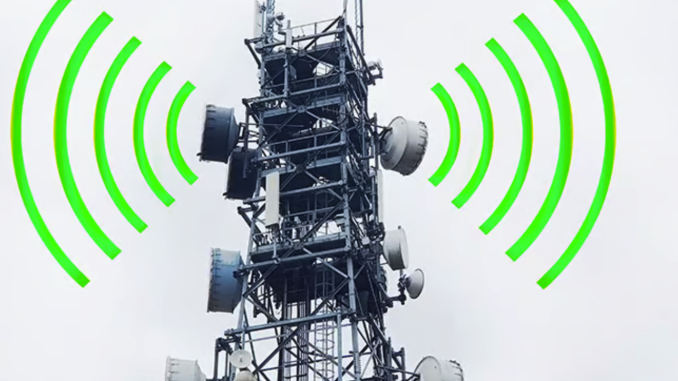
Original Article by Suzanne Burdick, Ph.D.
The Washington Post last week reported on dozens of “electrosensitive” people who moved to a remote West Virginia town with no cell service, drawing mainstream media attention to how wireless radiation can cause some people to experience life-altering health symptoms.
Electrosensitivity — sometimes referred to as electromagnetic sensitivity (EMS), electromagnetic hypersensitivity or microwave syndrome — is a federally recognized condition in which people experience adverse health effects due to electromagnetic field (EMF) exposure.
The Post interviewed residents of Green Bank, West Virginia, some of whom said EMF exposure previously had caused them to experience heart arrhythmia, headaches, eye problems, burning skin, brain fog, memory issues, fatigue and/or other symptoms.
So they moved to Green Bank, an EMF-free town situated in a roughly 13,000-square-mile area spanning Virginia and West Virginia. The Federal Communications Commission (FCC) in 1958 created the protected area — dubbed the National Radio Quiet Zone — because the area is home to the Green Bank Telescope.
The telescope, considered “the most accurate, versatile, large dish radio telescope in the world,” is powerful enough to pick up “the super-faint clouds of hydrogen that hang out between the stars and galaxies.” Because cell tower or Wi-Fi signals would drown out the subtle signals picked up by the telescope, the FCC protected the area from radiofrequency (RF) radiation-EMF interference.
Towns like Green Bank aren’t the only remote places where people with electrosensitivity are moving, a woman with electrosensitivity who asked to remain anonymous told The Defender.
She and others with electrosensitivity moved to Snowflake, Arizona, where 20- or 40-acre plots are relatively affordable and large enough to be far from any neighbor’s Wi-Fi signal or city cell tower.
Making the move was “completely devasting,” the woman said. “None of us wanted to leave our jobs, families, churches, synagogues — but we had to.”
She is far from alone in her experience, said Andrew Molnar, who told The Defender that now is the time to encourage mainstream media to report more on electrosensitivity.
Molnar, a lead organizer of an initiative to select just one name for electrosensitivity, wrote to Travis M. Andrews, author of the Post article. Molnar encouraged others with electrosensitivity to do the same.
“Even just a few sentences…would make an impression, and perhaps inspire him [Andrews] to go deeper on the topic,” Molnar said.
‘It is still a cage, even if it has an open sky’
Electrosensitivity isn’t something new, according to Physicians for Safe Technology.
In the 1970s and even earlier, the U.S. military published reports on how military personnel — especially radar workers — experienced negative health effects from exposure to wireless radiation.
Current estimates vary on how many people are electrosensitive.
A 2020 peer-reviewed study reported a “high prevalence of perceived EMF sensitivity in the general population, reaching 1.6% in Finland and 2.7% in Sweden, 3.5% in Austria, 4.6% in Taiwan, 5% in Switzerland and 10.3% in Germany.”
A 2019 analysis of U.K. data concluded that 5%-30% of the general population had mild electrosensitivity.
Those numbers are high enough to warrant calling electrosensitivity a “humanitarian crisis that requires an urgent response,” according to the International Commission on the Biological Effects of Electromagnetic Fields (ICBE-EMF).
The ICBE-EMF is a “consortium of scientists, doctors and related professionals” who study RF-EMF and make recommendations for RF-EMF exposure guidelines “based on the best peer-reviewed scientific research publications.”
In a July statement on the electrosensitivity crisis, ICBE-EMF emphasized the symptoms can vary from person to person but typically affect multiple body systems — such as cardiovascular and neurological — in a way that limits the person’s ability to live a normal life.
ICBE-EMF said, “The unmitigated, neglected widespread disruption of lives … is inhumane and deeply troubling.”
It isn’t fair that members of society with electrosensitivity are forced to leave their homes to take refuge in remote rural places, W. Scott McCollough — Children’s Health Defense’s (CHD) chief litigator for the organization’s Electromagnetic Radiation (EMR) & Wireless cases, told The Defender.
“It is still a cage, even if it has an open sky,” he said.
And sometimes the open sky may get threatened. The woman who moved to Snowflake said she and other residents are now fighting a proposed cell tower. Telecom infrastructure company SBA wants to build the tower and lease it to Verizon.
The woman said she doesn’t expect technological progress to stop but the U.S. government should do a better job of protecting people’s health.
“There really needs to be validation of the research [on electrosensitivity] and a general understanding that this is a public health hazard that needs to be looked at,” she said. The government’s job is to protect people more than caring for corporations “who want to make more money,” she added.
Groups urge FCC to accommodate the electrosensitive
Many people and organizations are mobilizing for change so electrosensitive people needn’t relocate to function physically.
Since 2022, CHD and a coalition of more than 80 nonprofits have repeatedly responded to the FCC’s request for comments on how to “prevent and eliminate digital discrimination.”
For instance, the “Reply Comments of Advocates for the EMS Disabled” submitted in June 2022 summarized more than 330 comments calling for acceptance and inclusion of people for whom EMS is a disability.
The comments also said:
- The FCC should always prioritize fiber internet and rely on wireless only when wiring is technically or economically infeasible or the main purpose is mobility.
- If the FCC is sincere about achieving “diversity, equity and inclusion,” it must recognize the specific and profoundly deleterious effects of wireless radiation on the EMS-disabled and take measures within its regulatory remit to address and solve this growing plight.
Fariha Husain, manager of CHD’s EMR & Wireless program, told The Defender that CHD continues to create action alerts and educational flyers focused on raising awareness of electrosensitivity and advocating for systemic change.
“We want to be sure the FCC and policymakers understand the importance of safe, inclusive access to broadband for everyone, especially those vulnerable to RF radiation,” Husain added.



Be the first to comment